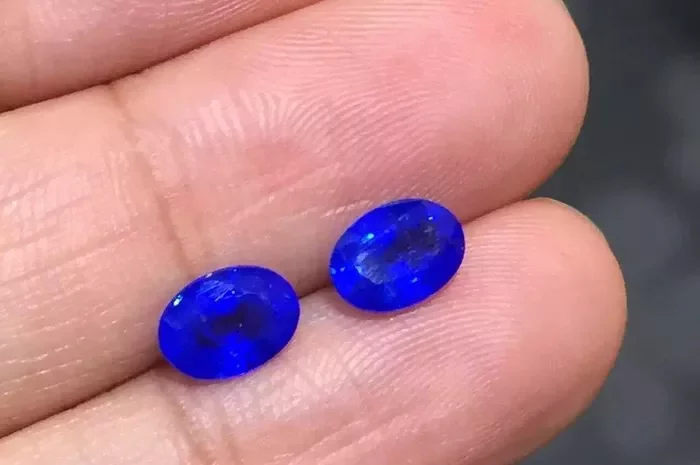Blue sapphires, with their rich hues and remarkable durability, are among the most coveted gemstones in the world. Whether you’re purchasing a sapphire for an engagement ring, a piece of fine jewelry, or as an investment, understanding the nuances of sapphire size is crucial. This article provides professional tips and advice on selecting the right size for your needs, ensuring you make an informed and satisfying choice.
Understanding Carat Weight and Size
Carat Weight vs. Size
Carat weight is the standard measure of a gemstone’s mass. However, it does not directly translate to the gemstone’s dimensions. Two sapphires of the same carat weight can appear different in size due to variations in cut and depth.
Dimensions Matter
The face-up dimensions (length, width, and depth) of a sapphire determine its visual size. A well-cut sapphire with proper proportions will display optimal brilliance and color, making it appear larger and more vibrant than a poorly cut stone of the same carat weight.
Ideal Proportions for Blue Sapphires
The Role of Cut
The cut of a blue sapphire significantly impacts its appearance. Ideal proportions for a blue sapphire are a depth percentage of 65-75% and a table percentage of 55-65%. These proportions ensure the gemstone captures and reflects light effectively, enhancing its color and brilliance.
Avoiding Deep Cuts
While deeper cuts can sometimes enhance color, they often result in a smaller face-up appearance. This means a deeper sapphire may look smaller when set in jewelry, despite having the same carat weight as a shallower stone.
Size Considerations Based on Jewelry Type
Rings
For engagement rings and other ring designs, the size of the sapphire should balance with the wearer’s hand size and finger length. Generally, a 1 to 2-carat blue sapphire is ideal for most rings. Larger stones can be stunning but may require a more robust setting to protect the gemstone from daily wear and tear.
Earrings
When choosing sapphires for earrings, pairs should be matched for size, color, and clarity. For studs, 0.5 to 1-carat sapphires offer a classic look, while larger stones (2 carats and above) create a more dramatic effect. Dangle earrings can accommodate larger sapphires, but their weight should be comfortable for the wearer.
Necklaces and Pendants
The size of a sapphire for a pendant or necklace can vary widely based on personal preference and design. A solitaire pendant featuring a 1 to 3-carat sapphire is elegant and timeless. Statement pieces may incorporate larger sapphires, often accompanied by diamonds or other gemstones.
Evaluating Sapphire Quality
Color Intensity
The color of a blue sapphire is one of its most critical attributes. The most prized sapphires exhibit a deep, velvety blue with strong saturation. Larger sapphires often showcase more intense colors, but smaller sapphires with exceptional color can be equally captivating.
Clarity and Inclusions
Blue sapphires, like other gemstones, can contain inclusions. Eye-clean sapphires, free of visible inclusions, are more valuable. When evaluating larger sapphires, ensure that inclusions do not detract from the gemstone’s overall beauty and brilliance.
Cut and Brilliance
A well-cut sapphire maximizes its brilliance and color. Symmetry and polish are crucial aspects of the cut. Even in larger sizes, a high-quality cut can make a sapphire appear more vibrant and appealing.
Budgeting for Size and Quality
Balancing Size and Quality
When purchasing a blue sapphire, it’s essential to balance size and quality within your budget. Larger sapphires with exceptional color and clarity command higher prices. However, opting for a slightly smaller stone with excellent attributes can provide better overall value.
Setting and Design Costs
The setting and design of the jewelry piece also impact the total cost. Intricate settings with additional diamonds or custom designs can add significantly to the expense. Consider these factors when budgeting for your sapphire purchase.
Practical Considerations for Daily Wear
Durability
Blue sapphires rank 9 on the Mohs scale of hardness, making them suitable for daily wear. However, larger sapphires in rings or bracelets should be set securely to prevent damage. Prong settings, bezel settings, and halo designs can offer added protection.
Maintenance and Care
Proper care is essential to maintain the beauty of your blue sapphire. Clean your sapphire regularly with mild soap and water, and avoid exposing it to harsh chemicals or extreme temperatures. Regular professional cleanings and inspections can help preserve the gemstone’s brilliance and integrity.
See Also: Is Periwinkle Blue Sapphire Suitable for Engagement?
Investment Potential of Blue Sapphires
Market Trends
Blue sapphires have historically maintained strong market demand and value. High-quality sapphires from renowned sources like Kashmir, Burma (Myanmar), and Sri Lanka are especially prized by collectors and investors.
Certification and Provenance
When investing in blue sapphires, ensure they come with certification from reputable gemological laboratories. Certificates verifying origin, treatment, and quality enhance the gemstone’s value and provide peace of mind.
Resale Value
The resale value of a blue sapphire depends on its quality, size, and market conditions. Larger, high-quality sapphires from prestigious sources tend to retain or appreciate in value over time. Proper documentation and maintenance also contribute to a gemstone’s resale potential.
Conclusion
Selecting the right size blue sapphire involves a careful balance of carat weight, dimensions, cut, and quality. By understanding these factors and considering the intended use and budget, you can make an informed decision that brings lasting satisfaction. Whether for personal enjoyment or investment, a well-chosen blue sapphire is a timeless treasure that offers both beauty and value.


